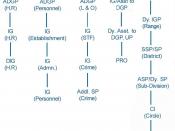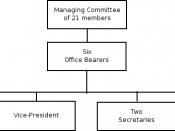In this vast growing global economy, organizations are often confronted
with increasing instability due to continuous changes in technology, an influx of
competition and rapidly changing customer needs. With respect to this it is imperative
that organizations respond to required or forced changes to their environment if the firms
existing goals are to be achieved.
With this in mind, organizations turn to management to combat the budding problem, through organizing. Organizing involves the structuring of the resources of the organization in order to achieve its objectives. This structuring includes:
*Dividing tasks into jobs (Adam Smith 1700's).
*Assigning jobs.
*Clustering of jobs into units, departments etc. to form the shape of the organization.
*Delegating authority and establishing a chain of command.
However, we cannot see the management function of organizing as the sole function of the manager, in order to combat these changes (individuals and groups in organizations will inevitably contribute to organizing the organization by the way they "do" or "don't do" activities).
Organizing involves the way people impose meanings, interpret actions and make responses to things, when they cannot make sense of these things; people reinterpret them according to their own views and often try to impose them on others. Therefore, the organizational structure is strengthened, through various means for example performance appraisal, different pay rates etc.
In light of this, they are many factors to consider for organizations to design the type of structure which best suits the way they wish to achieve their goals. What design is finally agreed upon depends on a number of decisions such as:
*Do we want/need to decentralize decision making.
*Are they needs to deal with problems such as the effect of structure on communications; staff/line conflict especially the tension between employees and experts and line managers; centralization versus decentralization etc.


